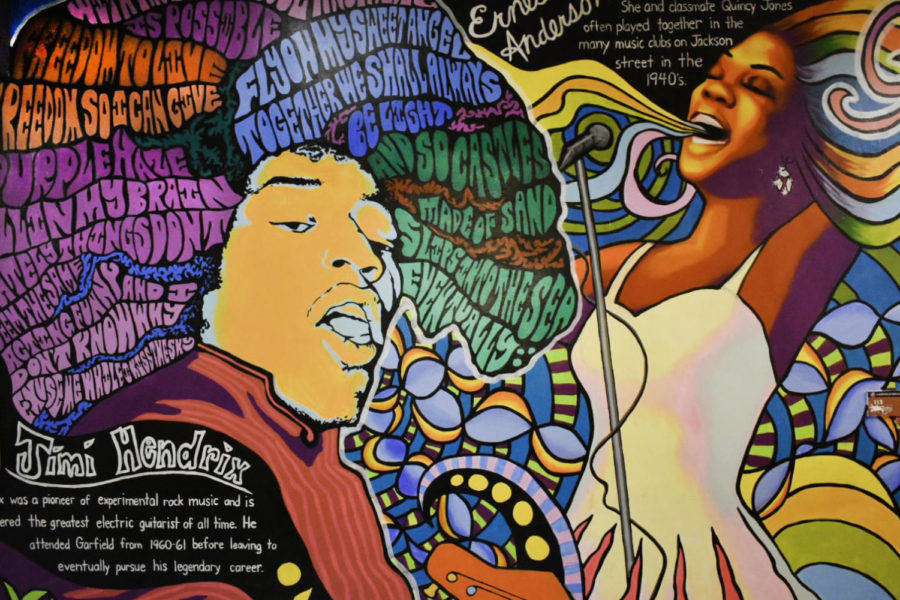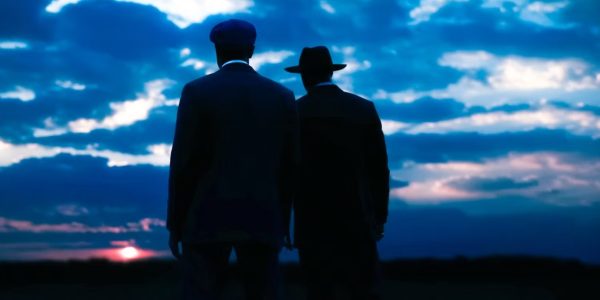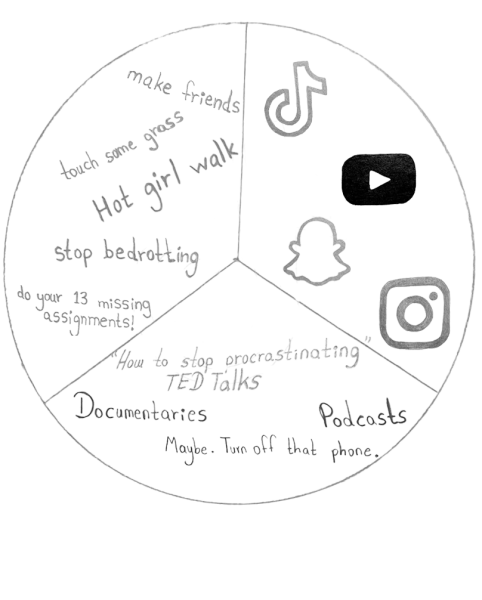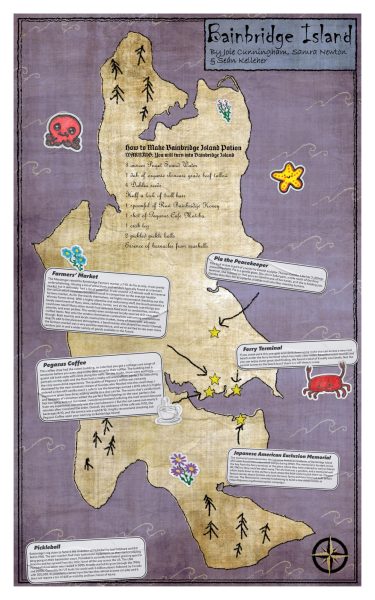History Preserved in Our Halls
The Central District’s history is memorialized by a Garfield mural
For the last decade, colorful murals have adorned Garfield’s 1st floor; a chronicle of the events and local heroes that helped shape the Central District. In the decade since, the school and neighborhood have drastically changed as gentrification continues to transform the area. The ‘Garfield High School History Project’ mural continues to be a reminder to students of the rich and diverse history of the Central District and Garfield’s importance to the region.
Gabriel Abott, a class of 2004 Garfield alumni, created the 1st floor mural in collaboration with students in an AP Art class and the mural club. It was her first project after coming back from Italy, where she was apprenticing under a muralist. “It was hugely special to be able to come back and do this mural. It was my first large public art commission, and it meant so much to me to offer that to Garfield. It felt like I was giving back to the community that really shaped me,” Abbott said.
Abbott was given instructions by the administration to create a mural memorializing the rich history of the Central District. “There was concern about the history and the stories of the community being lost,” Abbott said, because at the time gentrification was beginning to become visible in the area. She spent six months preparing, doing intense research, finding archival documents and photos, piecing together a time-line, and getting input from Garfield community members. After presenting the blueprint for the mural to the community, and getting it approved, Abbott started the three year project in 2010.
The mural starts in front of the counselors office depicting members of the Duwamish tribe. It includes people such as Chief Seattle, Henry Yesler, Susie Revels Clayton – one of the Central District’s first Black community leaders, Quincy Jones, and Jimi Hendrix, all of whom were influential people to the area. It also includes events specific to Garfield like the school’s first annual Funfest, Martin Luther King’s speech at the school, and the Garfield teacher and student organized boycott of mandatory standardized testing. The last image is a depiction of Obama outside the attendance office, to commemorate the speech he gave in 2008 at Garfield that focused on the importance of education. Each section on the timeline has facts and information about the events and people displayed in the art, in order to give it cultural relevance.
Besides preserving history, murals have other benefits, especially when they are in schools. Research from Fordham University concludes that quality school buildings can improve student achievement, and a component to a quality building is displaying art that is reflective of the community. Researchers from San Diego State University add that artwork can help develop pride in the spaces that we regularly spend time in. Abbott agrees with this sentiment, in regards to the mural she created, “Murals tell the story of a place, it helps students have an identity that they can get excited about, and especially if the mural represents stories that all students can really identify with. The art can affirm cultural identity and a sense that your stories matter,” Abbott said. She adds that murals can bring positivity, “Colors, shapes, patterns, they’re uplifting for our eyes and to our energy. It’s really important to have things that are beautiful around you, to kind of help you stay positive,” Abbott said.
Garfield and the Central District have grown and changed immensely after nearly a decade since the mural was created. “I did this artwork before the Black Lives Matter movement, before the #MeToo movement, before the awareness around climate change that there is now. If I was doing this mural now I would want to incorporate the conversations about social justice that are happening now,” Abbott said.
“It’s my hope that this mural inspires people to think about their history, and honor the history, and also remember that the way that I’ve told the stories is just one way to tell the stories, and that stories are a work in process and they evolve as societies evolve. We have to constantly learn how to tell better stories. The stories don’t end with my mural, and keep making art about who you are and what you believe in, “Abbott said.
Gunvor is a sophomore at Garfield and this is her first year on The Messenger. She is excited to bring news to the larger Garfield community this year....






